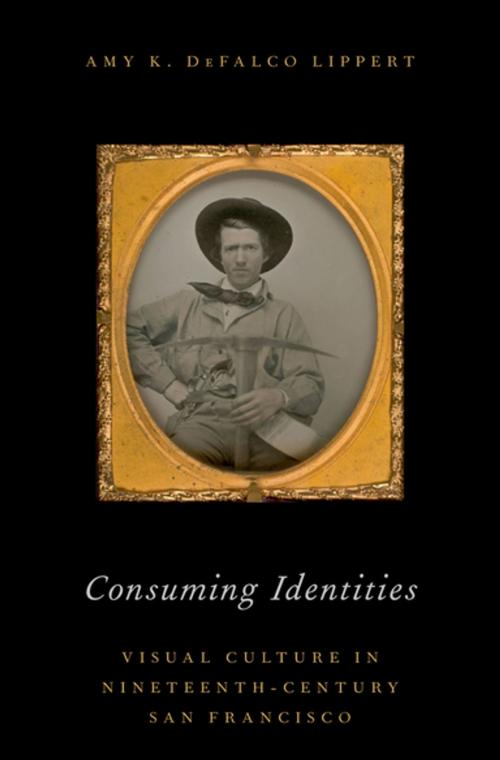Consuming Identities
Visual Culture in Nineteenth-Century San Francisco
Nonfiction, History, Americas, United States, 19th Century, 20th Century| Author: | Amy DeFalco Lippert | ISBN: | 9780190268992 |
| Publisher: | Oxford University Press | Publication: | March 2, 2018 |
| Imprint: | Oxford University Press | Language: | English |
| Author: | Amy DeFalco Lippert |
| ISBN: | 9780190268992 |
| Publisher: | Oxford University Press |
| Publication: | March 2, 2018 |
| Imprint: | Oxford University Press |
| Language: | English |
Along with the rapid expansion of the market economy and industrial production methods, such innovations as photography, lithography, and steam printing created a pictorial revolution in nineteenth-century society. The proliferation of visual prints, ephemera, spectacles, and technologies transformed public values and perceptions, and its legacy was as significant as the print revolution that preceded it. Consuming Identities explores the significance of the pictorial revolution in one of its vanguard cities: San Francisco, the revolving door of the gold rush. In their correspondence, diaries, portraits, and reminiscences, thousands of migrants to the city by the Bay demonstrated that visual media constituted a central means by which people navigated the bewildering host of changes taking hold around them in the second half of the nineteenth century, from the spread of capitalism and class formation to immigration and urbanization. Images themselves were inextricably associated with these world-changing forces; they were commodities, but as representations of people, they also possessed special cultural qualities that gave them new meaning and significance. Visual media transcended traditional boundaries of language and culture that divided diverse groups within the same urban space. From the 1848 conquest of California and the gold discovery to the disastrous earthquake and fire of 1906, San Francisco anticipated broader cultural transformations in the commodification, implementation, and popularity of images. For the city's inhabitants and sojourners, an array of imagery came to mediate, intersect with, and even constitute social interaction in a world where virtual reality was becoming normative.
Along with the rapid expansion of the market economy and industrial production methods, such innovations as photography, lithography, and steam printing created a pictorial revolution in nineteenth-century society. The proliferation of visual prints, ephemera, spectacles, and technologies transformed public values and perceptions, and its legacy was as significant as the print revolution that preceded it. Consuming Identities explores the significance of the pictorial revolution in one of its vanguard cities: San Francisco, the revolving door of the gold rush. In their correspondence, diaries, portraits, and reminiscences, thousands of migrants to the city by the Bay demonstrated that visual media constituted a central means by which people navigated the bewildering host of changes taking hold around them in the second half of the nineteenth century, from the spread of capitalism and class formation to immigration and urbanization. Images themselves were inextricably associated with these world-changing forces; they were commodities, but as representations of people, they also possessed special cultural qualities that gave them new meaning and significance. Visual media transcended traditional boundaries of language and culture that divided diverse groups within the same urban space. From the 1848 conquest of California and the gold discovery to the disastrous earthquake and fire of 1906, San Francisco anticipated broader cultural transformations in the commodification, implementation, and popularity of images. For the city's inhabitants and sojourners, an array of imagery came to mediate, intersect with, and even constitute social interaction in a world where virtual reality was becoming normative.















